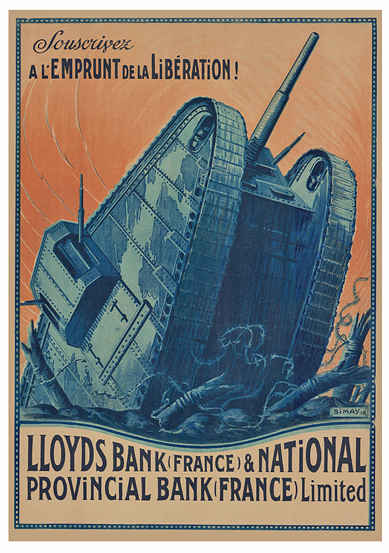Above and below Still excerpts from Art, Design and Gestalt Theory: the film version (2023), a film about the perceptual organizing principles that are fundamental to human vision, including camouflage.
Sunday, February 26, 2023
Friday, February 3, 2023
camouflage assisted him in making vast theatre murals
Above Ship camouflage artist James Daugherty in his studio.
•••
Publisher’s Weekly, October 26, 1929, pp. 275-276—
…But the new art was on the threshold. [American painter James] Daugherty read C. Lewis Hind's The Post Impressionists [1911] and painting seemed to open up new life, new inspiration, new adventure, and he went modern with a vengeance. This artistic regeneration served him in good stead when the war broke. He went into service, in ship camouflage, and spent arduous days and nights in the shipyards and crowded harbors among all the craft of the world, superintending the drawing and painting of a cubist's picture all around a battered, gun-mounted freighter that was loading shells, food, autos, coal and iron rails, sinking lower in the water with every ton of freight and sailing in twelve hours.
Returning to New York was like starting all over again beginning at Greenwich Village. Before the war he had married, and the Daughertys now took a studio apartment at 59 Washington Square that looked across the park, through the arch and directly up Fifth Avenue. The camouflage painting came in handy in painting in an incredibly short time, vast murals in new movie theaters.
Chagall as a camoufleur in Russia during World War I
Above Marc Chagall, The Birthday (1915). Museum of Modern Art. Public domain.
•••
Raymond Nacenta, School of Paris: the painters and the artistic climate of Paris since 1910. Greenwich CT: New York Graphic Society, 1960, page 284—
[Marc] Chagall returned to Russia in 1914, where he was married to Bella, whose love is celebrated in so many of his paintings. He served in a camouflage unit during the war and, after the Revolution, was for a time Commissar for the Fine Arts in Vitebsk.
RELATED LINKS
Dazzle Camouflage: What is it and how did it work? / Nature, Art, and Camouflage / Art, Women's Rights, and Camouflage / Embedded Figures, Art, and Camouflage / Art, Gestalt, and Camouflage / Optical science meets visual art / Disruption versus dazzle / Chicanery and conspicuousness / Under the big top at Sims' circus
Cocteau / just say he was wearing camouflage gear
Above Anon, detail of embroidered textile, 16th century Italy. Metropolitan Museum of Art. Public domain.
•••
Dan Franck, Bohemian Paris: Picasso, Modigliani, Matisse, and the Birth of Modern Art. New York: Grove Books, 2001—
[French surrealist writer Jean] Cocteau opened his closet door, and this particular evening he chose the outfit which seemed most appropriate to him: a costume to be worn in a ballet he was preparing for [Sergei] Diaghilev [founder of the Ballets Russes]. It was a clown's costume, composed of gaily colored trousers and a shirt, in vivid diamond shapes. He put it on. Just as he was leaving, he realized that walking about Paris in the middle of the war dressed in such a manner might be a little awkward. So he hid the disguise under a long coat. It still looked a little strange around the ankles, but if anyone asked him, he would just say that he was wearing camouflage gear . . . [p. 222]
[Jean Paulhan:] War camouflage was the work of the cubists: it was also, if you like, their revenge.
Thursday, February 2, 2023
bandits in warpaint hold up New York restaurant / 1928
Above George Catlin, Portrait of Blue Medicine (Toh-to-wah-kon-da-pee), Medicine Man of the Eastern Sioux Dakota tribe. 19th Century. Collection of the Smithsonian American Art Museum. Public domain.
Painting by George Catlin
•••
REDSKINS GET $1,000 Loot. Brooklyn Gunmen Paint Faces Then Stage Holdup. East Liverpool Review. East Liverpool OH, July 16, 1928, p. 8—
NEW YORK, July I6—Chicago gunmen may claim the distinction of having first introduced the submachine gun into the hold up “racket,” but to Brooklyn goes credit for the first use of camouflage by stick up men. Three bandits today entered a State Street restaurant with their faces disguised with paint used in a manner like that employed formerly only by Indians on the warpath. The paint was streaked over their faces in weird patterns. The leader wore a heavy black hue under one eye, while the rest of his face was streaked a brilliant red. The proprietor and his staff were so astonished that the bandits escaped with $1,000 in cash and jewelry before an alarm was raised.
cubism and camouflage / oscillation of appearances
Above Simay Imre, Subscribe to the Liberty Loan (World War I French poster), 1918. University of Illinois Archives, Public Domain.
•••
Wylie Sypher, Rococo to Cubism in Art and Literature. New York: Vintage Books, 1960—
To prove that art and life intersect, that thought enters things, that appearance and reality collide, or coincide, at the points we call objects, the cubist relied on certain technical devices: a breaking of contours, the passage, so that a form merges with the space about it or with other forms; planes or tones that bleed into other planes and tones; outlines that coincide with other outlines, then suddenly reappear in new relations; surfaces that simultaneously recede and advance in relation to other surfaces; parts of objects shifted away, displaced, or changed in tone until forms disappear behind themselves. This deliberate “oscillation of appearances” gives cubist art its high “iridescence” [p. 270].
It has been said that the great cubist achievement was camouflage [p. 299].
RELATED LINKS






